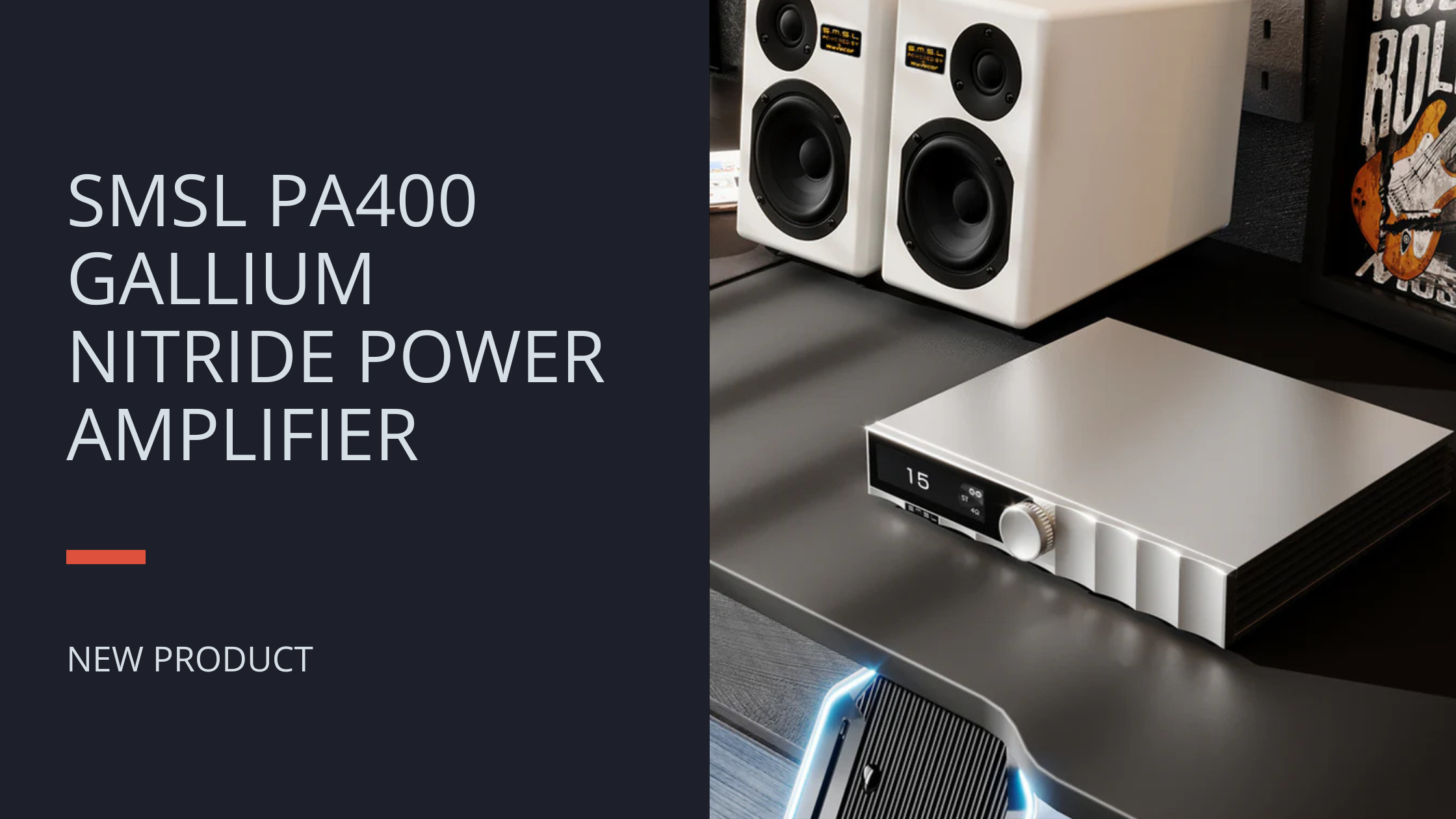Solving the Stack Problem: An Interview with Sound Solver Founder Grant
If you’ve ever balanced a DAC on top of an amp and said “fine for now,” you’ve met the problem Sound Solver exists to fix. Born from one engineer’s frustration with stacked gear, poor airflow, and cable spaghetti, Sound Solver builds modular organizational furniture designed specifically for desktop audio systems. Founder Grant—a mechanical engineer with a background at Mercedes—brings a perfectionist's approach to vibration control, materials science, and 3D printing. In this conversation, he talks about the moment he decided to build his first rack, what he learned from the audiophile community, how his dog keeps him grounded, and where he sees Sound Solver heading next.
A: Firstly and most importantly, you mention in your bio about being a dog dad. Can we see a photo of your dog?
SS: This is the most important question. As you can tell, she’s a pretty happy girl!
A: You mention that Sound Solver began from the frustration of stacking gear and lacking proper isolation, airflow, and cable organization. Can you walk me through the precise moment or setup that made you say ‘I have to build this myself’?
SS: It’s sometimes a bit dangerous to have 3D printers and know how to use them! I have been 3D printing for about 10 years now - since it was actually really difficult, that is - so that was the first thought that came into my head. “I’ll just 3D print something!” My friend also had a laser cutter in his garage at the time, which made it an obvious choice to start with laser cut acrylic shelves
A: From your RCA stereo in childhood to your current system, how has your perception of”‘good sound” evolved? What gear or listening experiences over the years most influenced your current design philosophy?
SS: As with most things in life, my understanding of “good sound” has been and will always be evolving. There have been a few “Aha” moments, though. One of those was getting my first “real” DAC - a Schiit Modi - and really hearing soundstage and imaging for the first time. Another of those moments was listening to the Vandersteen room at AXPONA 2025. The musicality of that system and the setup in the room was just breathtaking.
As for what gear has most influenced my design philosophy, I would have to say the Geshelli headphone offerings. Like Sound Solver, they offer a ton of different colors and customization options and that is certainly something that influenced the configurations I offer my own customers.
A: Your racks use thick acrylic shelving, 3D-printed brackets, silicone isolation feet, and stainless hardware. How did you arrive at those specific choices? What tradeoffs did you test (materials, geometry, damping, resonance)?
SS: First and foremost, I wanted something that was ultra stable with nice sturdy hardware and not thin and flimsy like some of the other offerings in this space. I also wanted to give it a fun but premium aesthetic, which was achieved by all the colors offered by 3D printing. I started by using off-the-shelf silicone isolation feet but have since moved on to a soft in-house design that is 3D printed and uses internal damping. I went through many (and I mean many) prototypes to get the right balance between vibration isolation and weight capacity, and have been super happy with their performance. The design I settled on uses internal concentric chambers that close each other off as the part is 3D printed and offer a surprising amount of isolation. Plus, the inside of them just looks so darn cool…
A: What was your prototyping process like? How many iterations did you go through before settling on your first production version? What were the biggest surprises or failures along the way?
SS: My prototyping process depended on so many different inputs. I polled the audiophile community on Reddit and Facebook groups to get feedback on what I was designing. I put a huge spreadsheet together of all the most popular small/desktop/headphone equipment out there to determine sizing. Then as customers started getting their hands on my racks, I got a lot of feedback in the vein of, “This is great, but what if you offered X?” As a mechanical engineer, I also had to consider manufacturability and the production method. The piece that was most difficult to design was the side brackets of my racks. The end result is actually a 2-piece bracket that is bonded together after they print. I had a certain aesthetic in mind for the brackets that I did not want to compromise on, and so that was yet another input I had to consider when prototyping. I went through about 15 different bracket designs and dozens of 3D prints before I settled on the original internal bracket. I would say my biggest failure was trying to keep the design a 1-piece print in the beginning for manufacturability.
The idea for my external brackets actually came from one of my customers. They reached out to me and said they had a Pine Tree Audio linear power supply that was just a little too wide to fit on my standard rack with internal brackets. We prototyped an external bracket that still used the same size shelf as my original racks but allowed for wider components. I am super lucky to have such great customers that have helped me along the way. That would be the biggest surprise so far and something I am so very thankful for!
A: As a small company, how do you balance handcrafted or custom touches (e.g. walnut shelves) with manufacturing constraints, quality control, and cost? Have you faced supply chain or scaling challenges?
SS: The most important challenge I have overcome thus far as far as manufacturability and quality control goes is finding the right partners to do the things I can’t. I don’t currently laser cut my own acrylic shelves or CNC cut my own walnut shelves, so I have had to find the right people to do that at the quality level I expect. As you might imagine, there has been some trial and error in that, and I was finally able to find partners in both areas that do an amazing job for me.
What really excites me are the custom touches and totally custom racks I offer. Since I have such great manufacturers that supply my shelves, even doing one-off racks is not cost-prohibitive for my customers. This also gives me a real chance to exercise my creativity and give the customer something they will truly cherish in their system.
A: You previously worked in engineering (including for Mercedes). Can you share how your experience influenced the way you approach designing audio racks and accessories at Sound Solver? Are there lessons from the auto world you’ve carried over into your product development, materials selection, or quality standards?
SS: I would say a lot of my design skills transferred directly from my time spent in the automotive manufacturing world. You also might say that some of the gentle curves and shapes on my products could be influenced by automotive design.
As for material selection and quality standards, I can be a bit of a perfectionist. This can be a detriment for me when I pick out the tiniest of flaws in my products that most others would never see. At the same time, I am happy to say I have never had a single complaint about the quality of the racks and have also never received a return request, which I am extremely happy about! This doesn’t happen by default, however. A lot of time and testing went into both material selection and 3D printer tuning in order to get the highest quality possible. In the end, I am pretty happy about the standards I uphold with each customer order.
A: Many audiophiles focus on amplifiers, DACs, cables, and so on. But you picked a niche in ‘audio furniture’ or support gear. Why did you choose that direction rather than designing an amplifier, speaker, or DAC?
SS: As you said, a lot of audiophiles focus on the gear - and rightly so. Where my products come in is when a customer has found the right combination of gear but they still want to take their system to the next level. While they can make your system look super cool and organized, Sound Solver racks also offer some tangible benefits like added ventilation, vibration isolation, and cable management.
I actually am a (very) amateur speaker designer as well, but I simply currently lack the electrical engineering skills required to design components. Call Geno at Geshelli if that’s what you’re looking for! I chose the support gear niche because that’s exactly where I feel I can have the most positive impact on the community.
A: You mention that additional products are in development. Without giving away trade secrets, what kinds of product categories do you see yourself moving into (stands, vibration control, power accessories, etc.)? What’s your five-year vision for Sound Solver?
SS: No trade secrets here! I’m an open book. I plan to offer more accessories and desktop rack sizes to begin with, followed by other support gear like speaker stands and full size racks. Those that attended AXPONA 2025 will have possibly seen a sneak peak at the full size racks that are coming.
My vision for Sound Solver is to become the ultimate destination for audiophiles searching for a way to get systems of all types to work and look great in the spaces they have available.
A: Looking back, what is the single decision (technical, business, or personal) that most influenced your success so far? And what advice would you give to an audiophile engineer who wants to start a gear or accessory company today?
S: First of all, I love that term - audiophile engineer. I’m going to start using that one!
I would say the single biggest decision or strategy involved in getting where I am today was planning and working backwards from the goal. If you’re a fellow audiophile engineer with a product in mind, imagine yourself selling that product to customers. Work backwards from there by asking yourself questions. How will the product be shipped to them? How will they find me? How will the product be manufactured? How will it be designed, etc.? Reverse engineer your success.





